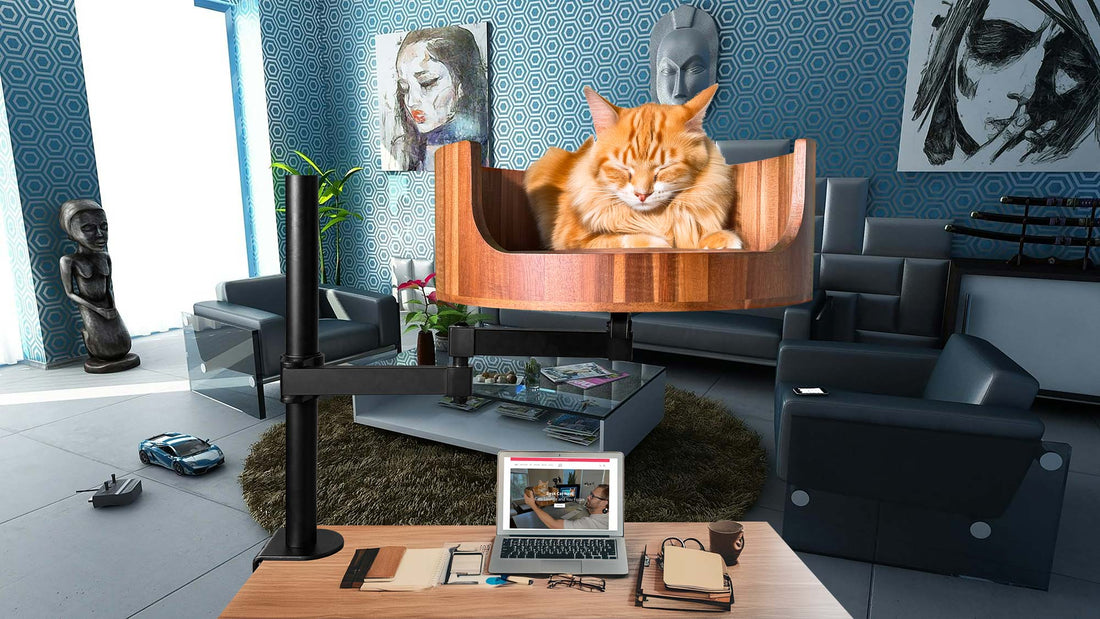
When a Cat Wiggles Its Tail: Understanding Feline Behavior
Share
Desk Cat Nest is a cozy corner in your home where your feline friend loves to curl up and nap. As you watch your cat settle in, you may notice its tail starting to wiggle in a peculiar way. What does this behavior mean? Understanding feline behavior, especially when it comes to tail movements, can provide valuable insights into your cat's emotions and needs.
In this article, we will explore the significance of a cat's tail wiggling, from playful flicks to aggressive thrashing. We will delve into the various meanings behind these movements, helping you decipher your cat's non-verbal communication cues. By understanding why your cat wiggles its tail, you can better respond to its needs and provide a comfortable environment for your furry companion. So next time you see your cat perched in the Desk Cat Nest, pay attention to its tail movements and gain a deeper understanding of your feline friend's behavior.
1. Tail wiggling in cats is a form of communication that can indicate a range of emotions, including excitement, frustration, or aggression.
2. Understanding the context in which a cat wiggles its tail, along with other body language cues, can help decipher their mood and intentions.
3. Cats may also wag their tails as a way to maintain balance or show curiosity, highlighting the importance of considering the whole situation before reacting.
4. Responding appropriately to a cat's tail behavior can help strengthen the human-feline bond and avoid potential conflicts.
5. By observing and interpreting a cat's tail wiggles, owners can better meet their pet's needs and ensure a harmonious relationship.
Why Do Cats Wiggle Their Tails?
There are several reasons why cats wiggle their tails, and understanding these behaviors can help pet owners decipher their feline's emotions and intentions. Cats often wiggle their tails as a form of communication, signaling different emotions such as excitement, curiosity, or aggression. For example, a cat may wag its tail rapidly when feeling agitated or threatened, while a slow, deliberate wag may indicate a playful mood. By paying attention to the speed and rhythm of tail movements, pet owners can gain valuable insights into their cat's state of mind.
Common Tail Wagging Behaviors
When a cat wiggles its tail, it's essential to pay attention to other body language cues to fully understand the message being conveyed. In addition to the speed and direction of tail movements, observing the position of the ears, whiskers, and overall posture can provide valuable context. For instance, a cat with an upright tail and relaxed ears may be feeling content, whereas a cat with a low, puffed-up tail and flattened ears could be displaying signs of fear or aggression. By interpreting these signals holistically, pet owners can better respond to their cat's needs and emotions.
Tail Wagging in Different Contexts
Cats may exhibit tail wagging behavior in various situations, depending on their surroundings and interactions with humans or other animals. For example, a cat may wag its tail while hunting prey, signaling its focus and readiness to pounce. In contrast, a cat may also wag its tail when greeting a familiar human or feline companion, showing excitement and affection. By observing tail wagging behaviors in different contexts, pet owners can gain a deeper understanding of their cat's preferences, triggers, and communication style.
Frequently Asked Questions
What causes a cat to wiggle its tail?
A cat may wiggle its tail as a sign of excitement, agitation, or anticipation. It can also be a way for a cat to communicate its feelings or intentions to its owner or other animals.
How can a Desk Cat Nest help when my cat wiggles its tail?
A Desk Cat Nest provides a secure and comfortable space for your cat to relax and feel safe. By having their own designated area, cats may be less likely to wiggle their tail in response to external stimuli or stressors.
Is the Desk Cat Nest easy to assemble?
Yes, the Desk Cat Nest is designed to be easy to assemble without the need for any tools. Simply follow the included instructions to put it together in just a few minutes.
Can multiple cats use the Desk Cat Nest at the same time?
Yes, the Desk Cat Nest is spacious enough to accommodate multiple cats. However, some cats may prefer their own space, so it is recommended to observe your cats' behavior and provide additional nests if needed.
Is the Desk Cat Nest easy to clean?
Yes, the Desk Cat Nest is made of easy-to-clean materials such as fabric or plastic. Simply wipe it down with a damp cloth or vacuum any loose fur to keep it looking and smelling fresh for your cat.
In conclusion, choosing a Desk Cat Bed for your feline friend can greatly benefit them when they wiggle their tail. By providing a comfortable and secure space for your cat to lounge and relax, the Desk Cat Bed can help alleviate stress or discomfort that may be causing the tail-wiggling behavior. The raised edges of the bed provide a sense of security, while the soft cushioning offers a cozy spot for your cat to rest and unwind. Overall, investing in a Desk Cat Bed is a valuable choice that can improve your cat's well-being and provide a solution for when they exhibit this behavior.



















































